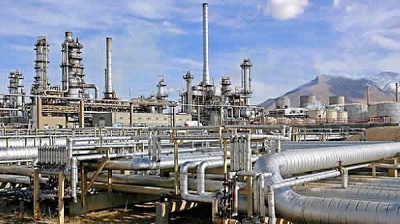Shell Lifts Force Majeure Raising Nigeria’s Crude Output by 226,000bpd
 Nigeria’s crude oil output is expected to rise by 226,000 barrels per day, as the Shell Petroleum Development Company (SPDC) has lifted the force majeure declared on exports of Bonny Light, Nigeria’s reference crude oil grade.
Nigeria’s crude oil output is expected to rise by 226,000 barrels per day, as the Shell Petroleum Development Company (SPDC) has lifted the force majeure declared on exports of Bonny Light, Nigeria’s reference crude oil grade.
This follows the completion of repairs of the Nembe Creek Trunk Line (NCTL) by operator, Aiteo Eastern E & P Company Limited.
The development was a boost to efforts on the recovery of Nigeria’s crude production heavily impacted by militancy in the Niger Delta, a situation that prompted the Organisation of Petroleum Exporting Countries (OPEC) to exempt the country from the production cuts, which the cartel has extended until March 2018.
A Shell spokesman, Mr. Bamidele Odugbesan, confirmed that “the force majeure on Bonny Light exports was lifted effective 12:00hrs (Nigerian time) on Wednesday, June 28, 2017 after the repair of the sabotage leak”.
The 600,000 barrels per day capacity, 100-kilometre NCTL built by SPDC and commissioned in 2010, feeds the Bonny export terminal in Rivers State.
SPDC sold the pipeline and Oil Mining Lease (OML) 29 to Aiteo in 2015 as part of its divestment programme for onshore assets in the Niger Delta.
NCTL and the Trans-Niger Pipeline (TNP) remain the two major pipelines used by SPDC and some other producing companies to evacuate crude from the eastern Niger Delta to the export terminal.
Before the downward slide in prices, oil had traded at a 2017 peak of $55 per barrel in 2017.
Prices recently slipped to the lowest in 10 months but have since rebounded more than 7 per cent, stretching their bull-run to the longest since April.
Reuters reported that the global benchmark, Brent crude futures were up 35 cents Thursday at $47.66 a barrel, having touched a two-week high of $47.83 earlier in the session.
U.S. West Texas Intermediate (WTI) crude was up 33 cents at $45.07 a barrel, after registering an intraday high of $45.24, also a two-week peak.
U.S. government data showed on Wednesday that domestic crude production dropped by 100,000 barrels per day (bpd) to 9.3 million bpd last week, the steepest weekly fall since July 2016.
Reuters quoted some analysts and traders as saying that the decline was related to temporary factors such as the shutdown of some oil production sites due to Tropical Storm Cindy in the Gulf of Mexico and maintenance in Alaska.
Global oil supplies remain ample despite output cuts by OPEC and other producers by 1.8 million bpd since January.
OPEC and its allies, trying to reduce a crude glut, agreed in May to extend the supply cut through March 2018.
OPEC exempted Nigeria and Libya from the curbs due to unrest that has sapped these countries’ production.








